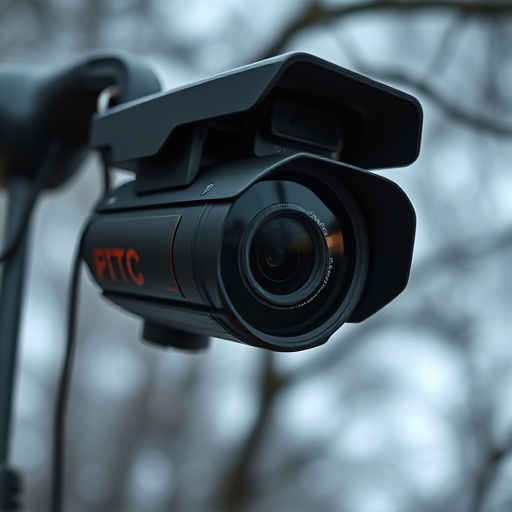Battery-powered wireless spy cameras offer discreet, flexible surveillance solutions with independent, rechargeable operation. Their compact design and remote access via smartphone apps make them ideal for hidden indoor and outdoor monitoring. Widely adopted by professionals and individuals alike, these cameras feature advanced optical sensors for clear low-light footage and precise placement. Advanced detection methods, including light pattern analysis and signal tracking, ensure their untraceable deployment. Security experts employ specialized equipment to accurately identify and neutralize these devices, addressing the evolving challenges of modern covert surveillance while navigating legal and ethical considerations surrounding their use.
“Uncover the hidden world of surveillance with our comprehensive guide on optical sensor detection for battery-powered wireless spy cameras. We explore the evolution of these sophisticated devices, from their intricate design to their stealth capabilities. This article delves into the professional methods employed to detect and counteract these hidden cameras, highlighting advanced techniques and legal considerations. By understanding the role of optical sensors, you’ll gain valuable insights into navigating this modern surveillance landscape.”
- Understanding Battery-Powered Wireless Spy Cameras: A Brief Overview
- The Role of Optical Sensors in Spy Camera Technology
- Professional Detection Methods for Untraceable Deployment
- Advanced Techniques to Counteract Spy Camera Stealth
- Legal and Ethical Considerations in Using Optical Sensor Detection
Understanding Battery-Powered Wireless Spy Cameras: A Brief Overview
Battery-powered wireless spy cameras have revolutionized surveillance and security, offering a discreet and flexible monitoring solution. These innovative devices operate independently of traditional power sources, relying instead on rechargeable batteries to capture and transmit footage wirelessly. This feature sets them apart from their wired counterparts, allowing for easy deployment in various settings without the hassle of complex wiring or constant power connections.
The compact design and wireless functionality make battery-powered spy cameras ideal for hidden surveillance. They can be strategically placed indoors or outdoors, providing remote access to live video feeds via smartphone apps or web interfaces. This technology has gained popularity among professionals in law enforcement, private investigators, and even everyday individuals seeking advanced security measures for their homes or businesses.
The Role of Optical Sensors in Spy Camera Technology
Optical sensors play a pivotal role in the functionality and effectiveness of spy camera technology, especially in battery-powered wireless spy cameras. These sensors are responsible for capturing and processing visual data, enabling hidden surveillance devices to gather intelligence discreetly and efficiently. With advancements in optical sensor technology, modern spy cameras can now offer enhanced visibility and clarity, even in low-light conditions.
Wireless spy cams rely on high-quality optical sensors to detect motion, record footage, and trigger alerts. The ability to seamlessly integrate these sensors into compact camera designs allows for unobtrusive placement in various environments. Whether it’s a subtle pinhole camera or a more sophisticated hidden device, optical sensors ensure that battery-powered wireless spy cameras can capture critical visuals without drawing attention.
Professional Detection Methods for Untraceable Deployment
In scenarios requiring untraceable deployment, professionals often turn to advanced detection methods for battery-powered wireless spy cameras. These discreet and remote surveillance systems demand a nuanced approach to ensure their effectiveness and anonymity. One such method involves leveraging cutting-edge optical sensors that can detect minute changes in light patterns, allowing for the identification of hidden cameras even when they are not actively transmitting data. This technique, combined with specialized software, enables professionals to sweep and map areas with high precision, pinpointing the exact locations of spy cameras.
Additionally, professionals employ advanced signal detection technologies to intercept and analyze wireless signals emitted by battery-powered spy cams. By utilizing direction finding techniques, they can determine not only the presence but also the precise orientation and distance of these hidden devices. This comprehensive approach ensures that even the most subtle and hard-to-detect cameras are uncovered, providing a robust solution for situations where discretion and thoroughness are paramount.
Advanced Techniques to Counteract Spy Camera Stealth
In the evolving landscape of security, countering hidden threats like battery-powered wireless spy cameras requires advanced techniques. Professionals employ sophisticated optical sensor detection sweeps to identify and neutralize these stealthy devices. By integrating specialized equipment with real-time data analysis, experts can detect even the most subtle camera signals, ensuring no covert surveillance goes unnoticed.
Innovative methods include using directional sensors that can pinpoint the exact location of hidden cameras, and advanced signal processing algorithms that filter out ambient noise to zero in on the unique frequency signatures of spy cams. These cutting-edge techniques not only enhance detection accuracy but also mitigate the risks associated with manual search methods, providing a comprehensive solution for modern security challenges posed by battery-powered wireless spy cameras.
Legal and Ethical Considerations in Using Optical Sensor Detection
When employing optical sensor detection technologies, particularly with battery-powered wireless spy cameras, it’s paramount to navigate a landscape of legal and ethical considerations. These devices, designed for covert surveillance, can infringe upon privacy rights if not used responsibly. The legality of their use varies by jurisdiction, with many countries having strict regulations around hidden cameras to protect citizens from unwanted intrusion into their personal spaces.
Ethically, the onus is on users to respect the privacy of others and only deploy such technology for legitimate purposes, like home security or law enforcement, rather than for malicious activities. Transparency about the presence of spy cameras and obtaining consent where feasible are essential practices to uphold ethical standards in surveillance.
Battery-powered wireless spy cameras have evolved into sophisticated surveillance tools, but their detection has also advanced. Professional methods now employ optical sensor technology to uncover these hidden devices. By understanding the role of sensors and exploring advanced techniques, experts can counteract the stealthy nature of spy cameras. While legal and ethical considerations must be addressed, the continuous development of detection methods ensures a safer and more transparent surveillance environment.
